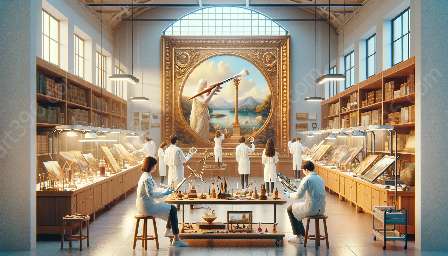Conservation and sustainability are critical concepts that play a vital role in the preservation of our environment and cultural heritage. In this comprehensive guide, we will explore the fundamental principles of sustainability, their application in conservation, and their relevance to the preservation of metal objects and art conservation.
Understanding Conservation
Conservation, in the broadest sense, refers to the intentional and planned management of natural resources, artifacts, or other valuable elements to prevent their degradation or loss. It encompasses various fields, including environmental conservation, cultural heritage conservation, and the preservation of art and artifacts.
Principles of Conservation
The principles of conservation are rooted in the idea of responsible stewardship, aiming to ensure that resources and cultural heritage are sustained for future generations. Some key principles include minimal intervention, reversibility, documentation, and ethical considerations.
Minimal Intervention: This principle advocates for the minimal alteration or treatment of an object or resource to preserve its original state as much as possible.
Reversibility: Conservation treatments should be reversible, allowing future generations to make informed decisions about the preservation of the object or resource.
Documentation: Thorough documentation of conservation activities, including condition assessments, treatment processes, and environmental monitoring, is crucial for transparency and knowledge transfer.
Ethical Considerations: Conservation practices must uphold ethical standards, respecting the integrity and cultural significance of the objects being preserved.
Unpacking Sustainability
Sustainability, on the other hand, revolves around the responsible use of resources to meet the needs of the present without compromising the ability of future generations to meet their own needs. It encompasses environmental, social, and economic dimensions, often depicted as the three pillars of sustainability.
Principles of Sustainability
The principles of sustainability guide decision-making processes that seek to create and maintain a harmonious balance between environmental health, social equity, and economic prosperity. Key principles include the conservation of resources, pollution prevention, and intergenerational equity.
Conservation of Resources: Emphasizes the efficient and careful use of resources to minimize waste and foster sustainable practices.
Pollution Prevention: Aims to reduce, mitigate, or eliminate the release of harmful substances into the environment, ensuring the preservation of ecosystems and human health.
Intergenerational Equity: Advocates for the fair and equitable use of resources, acknowledging the rights of future generations to access the same natural and cultural resources.
Conservation of Metal Objects
The conservation of metal objects involves the application of conservation principles to preserve and protect metal artifacts, structures, and historical objects. This may include preventive conservation measures, such as environmental control and corrosion prevention, as well as active conservation treatments, such as cleaning, stabilizing, and protective coatings.
Read more about conservation of metal objects...
Art Conservation
Art conservation encompasses the preservation and restoration of artworks, cultural artifacts, and historical objects, often involving interdisciplinary approaches that combine scientific analysis, artistic expertise, and ethical considerations. It aims to maintain the integrity and authenticity of art while safeguarding it for future generations.
Read more about art conservation...
Conclusion
Conservation and sustainability go hand in hand, guiding our efforts to safeguard natural resources, cultural heritage, and artistic achievements. By understanding and applying these principles, we can ensure the longevity and resilience of our environment, metal objects, and works of art, thereby preserving their beauty and significance for generations to come.

